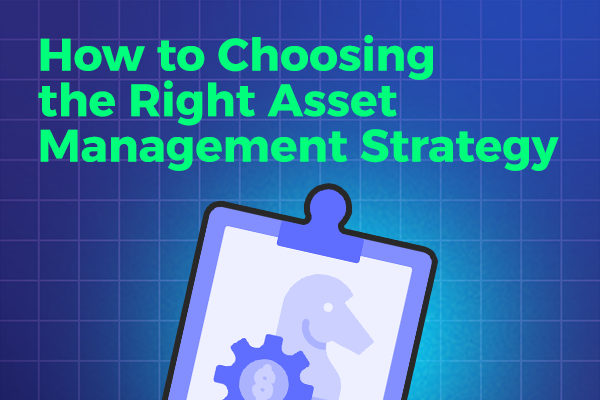The Ultimate Guide to Stock Investing in the MENA Region: Tips and Strategies
For investors looking to explore new opportunities and diversify their portfolios, the MENA region offers a wealth of potential. With a young and rapidly growing population, a strategic location between major trade routes, and vast reserves of oil and gas, this region has become an increasingly popular destination for investors seeking to maximize their returns. However, navigating the complex landscape of stock investing in the MENA region can be challenging, especially for those unfamiliar with the local markets and regulations.
That’s why we’ve put together this ultimate guide to stock investing in the MENA region, packed with tips and strategies to help you make informed decisions and achieve your investment goals. Whether you’re a seasoned investor or just starting out, this guide will provide you with the knowledge and insights you need to succeed in this dynamic and exciting market.
Understanding the MENA stock market
The MENA region is home to a diverse range of stock markets, each with its own unique characteristics and regulations. Some of the largest and most well-known stock markets in the region include the Dubai Financial Market, the Abu Dhabi Securities Exchange, the Kuwait Stock Exchange, and the Saudi Stock Exchange. In addition to these major markets, there are also a number of smaller markets throughout the region, each offering its own set of investment opportunities.
One of the key characteristics of the MENA stock market is its volatility. Due to a range of factors such as geopolitical instability, fluctuations in oil prices, and changing regulatory environments, the stock markets in this region can experience rapid shifts and swings in value. For investors, this can present both challenges and opportunities, as it requires a careful and strategic approach to investing in order to mitigate risks and maximize returns.
To successfully invest in the MENA stock market, it’s important to have a deep understanding of the local market conditions and trends. This may require working with local investment advisors or brokers who have a thorough understanding of the region’s economic and political landscape, as well as its unique cultural and social dynamics.
Benefits of investing in the MENA region
Despite the challenges of investing in the MENA region, there are also a number of potential benefits for investors. One of the most significant of these is the region’s vast reserves of natural resources, particularly oil and gas. This has led to the development of a number of thriving industries in the region, including energy, finance, and real estate, all of which offer potential investment opportunities.
In addition to its natural resources, the MENA region also benefits from a young and rapidly growing population, which is driving demand for a range of goods and services. This presents opportunities for investors in sectors such as healthcare, education, and consumer goods, as well as in industries related to infrastructure and transportation.
Finally, the MENA region’s strategic location between major trade routes makes it an important hub for global commerce, with a range of potential investment opportunities in industries such as logistics, shipping, and manufacturing.
Risks of investing in the MENA region
While there are certainly potential benefits to investing in the MENA region, there are also a number of significant risks and challenges to consider. One of the most significant of these is the region’s geopolitical instability, which can lead to sudden shifts in market conditions and increased levels of risk.
In addition to geopolitical instability, there are also a number of regulatory challenges to investing in the MENA region, particularly for foreign investors. This may include restrictions on foreign ownership of certain types of assets, as well as complex tax and legal frameworks that can make it difficult to navigate the local markets.
Finally, there is also the risk of economic instability, particularly in countries that are heavily dependent on oil and gas revenues. Fluctuations in oil prices can have a significant impact on the local economies and stock markets, which can in turn affect investment returns.
Stock investing strategies for the MENA region
Given the unique characteristics of the MENA stock market, it’s important for investors to develop a customized investment strategy that takes into account local market conditions, regulatory frameworks, and geopolitical risks. Some key strategies to consider when investing in the MENA region may include:
1- Diversification
One of the most important strategies for investing in the MENA region is to diversify your portfolio across a range of assets and markets. This can help to mitigate risks and maximize returns, particularly in volatile market conditions.
2- Focus on long-term growth
Given the potential for volatility in the MENA stock market, it’s important to focus on long-term growth rather than short-term gains. This may involve investing in sectors and industries that are likely to experience sustained growth over time, rather than trying to time the market for short-term gains.
3- Work with local advisors
To successfully navigate the MENA stock market, it’s important to work with local investment advisors who have a deep understanding of the local market conditions and regulatory frameworks. This can help to identify potential investment opportunities and mitigate risks.
Top stocks to invest in the MENA region
There are a number of top stocks to consider when investing in the MENA region, depending on your investment goals and risk profile. Some of the top stocks in the region include:
1- Saudi Aramco
As one of the largest oil and gas companies in the world, Saudi Aramco is a key player in the MENA region’s energy industry. Despite recent market volatility, the company remains an attractive investment opportunity for long-term investors.
2- Emirates NBD
As one of the largest banking and financial institutions in the UAE, Emirates NBD offers investors a range of potential investment opportunities in the region’s thriving finance industry.
3- Emaar Properties
As one of the largest real estate developers in the region, Emaar Properties offers investors exposure to the MENA region’s booming real estate market.
Unlock Wealth: Sign Up Now for Smart Investing Success
How to choose a stockbroker in the MENA region
When investing in the MENA region, it’s important to choose a stockbroker who has a deep understanding of the local market conditions and regulatory frameworks. Some key factors to consider when choosing a stockbroker may include:
1- Regulatory compliance
Make sure that the stockbroker you choose is fully compliant with local regulations and has a thorough understanding of the local legal and tax frameworks.
2- Experience and expertise
Look for a stockbroker who has a proven track record of success in the MENA region, with a deep understanding of the local market conditions and trends.
3- Service and support
Choose a stockbroker who offers a high level of service and support, with access to local investment advisors and other resources to help you make informed investment decisions.
Tips for successful stock investing in the MENA region
To succeed in the MENA stock market, it’s important to have a clear and strategic approach to investing. Some key tips to consider when investing in the MENA region may include:
1- Conduct thorough research
Before investing in any asset or market in the MENA region, conduct thorough research to understand the local market conditions, trends, and risks.
2- Diversify your portfolio
To mitigate risks and maximize returns, it’s important to diversify your portfolio across a range of assets and markets.
3- Be patient
Investing in the MENA region requires a patient and long-term approach, particularly in volatile market conditions.
4- Work with local advisors
To navigate the complex landscape of the MENA stock market, it’s important to work with local advisors who have a deep understanding of the local market conditions and regulatory frameworks.
Common mistakes to avoid in stock investing in the MENA region
When investing in the MENA region, there are a number of common mistakes that investors should avoid. Some of these mistakes may include:
1- Failing to conduct thorough research
Investing in the MENA region requires a deep understanding of local market conditions and trends, as well as the risks and challenges of investing in the region.
2- Overestimating short-term gains
Given the potential for volatility in the MENA stock market, it’s important to focus on long-term growth rather than short-term gains.
3- Ignoring regulatory frameworks
Investing in the MENA region requires a thorough understanding of local regulatory frameworks, including restrictions on foreign ownership and complex tax and legal frameworks.
Conclusion and final thoughts
Investing in the MENA region can be a challenging but rewarding experience for investors seeking to diversify their portfolios and maximize their returns. By developing a customized investment strategy that takes into account local market conditions, regulatory frameworks, and geopolitical risks, investors can identify potential opportunities and mitigate potential risks.
Whether you’re a seasoned investor or just starting out, the MENA region offers a wealth of potential for those willing to take on the challenges and opportunities of this dynamic and exciting market.




